Written & photographed by Jess Daniels, except as noted
Knitting holds so much meaning for me – the simple act of stringing loops of yarn together to create fabric becomes a moving meditation that feeds my creativity and soothes my busy brain.
For me, knitting with local fiber adds even greater depth – connecting me not only to the process of making clothing and the tradition of the craft, but to place; to my Fibershed.
When the Fibershed Knitalong was conceived, I thought: what an amazing way to visualize fibersheds around the world, to see what a locally grown and made garment looks like from places near and far. I also thought immediately of a few special skeins of yarn in my cabinet, skeins that I latched onto the moment I saw them, but had been patiently waiting for the perfect project.
The idea of a ‘knitalong’ (KAL) is to gather a group of people around one project, which could center around one yarn, one pattern, or even just one theme. The Fibershed KAL was based off a unique pattern called Radiata, designed by Emily Cunetto of the Northern California Fibershed, which is beginner-friendly but completely adaptable to different types of yarn. It’s a shawl knit in triangles that connect from one to the next, allowing the knitter to change colors or even alternate completely different yarns.
The yarn I chose to use is single-ply, fingering-weight Icelandic wool raised by Lydia Strand of Lydia’s Flock. I actually bought the yarn on the first day that I met Lydia, at Shepherd’s Harvest Festival last spring, at the Three Rivers Fibershed educational table. The natural cream and midnight black hues of the yarn caught my eye immediately, as did the slightly fuzzy and thick-thin variations in the strands of yarn. Lydia had just gotten the yarn back from the mill (Northern Woolen Mill), where the fleece from her sheep was carded and spun into these lovely strands ready for my knitting needles (if you’re curious about how yarn is made, I'd recommend this series of posts on making small-farm yarn in Vermont).
After purchasing the yarn in May, I played around with different designs, knitting little samples (called swatches) and trying to decide what to make. Over that same time, I was fortunate to get to know Lydia herself and even meet her flock one day last fall. Helping skirt fleeces with Lydia and Jared at their fall shearing, I was struck by the feeling of sinking my hands into the wool, still warm and freshly clipped from the sheep’s back.
Sometimes I think I have a pretty strong grasp on how clothes are made, where they come from, what goes into it and who is involved. But as I wound the soft and light Icelandic yarn into balls, and knit the balls of yarn into a shawl, I was reminded of that warm wool on a chilly fall morning, of the hands-on care and knowledge with which Lydia and Jared raise their sheep and graze their fields, and of the morning light as the sun rose on the drive from my Minneapolis apartment out to the farm.
In knitting this shawl, I got to know a bit more about the endless, intangible moments between the how, where, what, and who; I got to reflect on my new friendship, to witness the shift in the landscape across a piece of our Three Rivers Fibershed, and to marvel at all the meaning held in the stitches of this piece.
Though the Fibershed KAL was held at the end of 2016, the Radiata shawl pattern is still available and makes for an excellent exploration of local fiber, and a versatile garment to wear. I mostly wear my shawl wrapped around my neck to protect against the wind and snowdrifts, but it makes a warm layering piece worn around the shoulders or chest, beneath a coat or on top of a thin sweater.
Photograph by Paige Green
Even if you don’t want to wax poetic about your local knitting experience, perhaps you’re interested in supporting locally-grown and -made yarn because it means your clothing wasn’t shipped around the world to get to you, or because it offers transparency around animal welfare, or because it invests directly in our local economy, in the farmers who manage the landscape, and in the business owners who support our community. For any of these reasons or more, I would encourage you to shop local for your next knitting project, and have rounded up a few of my favorite sources – a complement to the emerging Producer Directory which we really hope to grow as a resource throughout the Three Rivers Fibershed.
My adventures in sourcing local fiber:
Lydia’s Flock is clearly a personal favorite and has an online shop
Rach-Al-Paca mill offers a variety of local wool and alpaca yarns at the mill shop, open 10-6 weekdays and 9-2 on Saturdays
Gale Woods Farm is part of the Parks District & has a shop on site with fiber from their animals
Shepherd’s Harvest Festival is a wonderful weekend to get to know local fiber - check out the barn and look for the smaller vendors in the main halls (May 12 - 14, 2017)
Both the North Star Farm Tour and the Natural Fiber Alliance Tour are a great way to go straight to the source (weekends in the fall; or consider contacting the participating farms directly to purchase fiber)
Keep checking the Producer Directory as we add more local fiber listings
Lydia's Flock, Rach-al-Paca mill, and Black Cat Farmstead (part of the North Star Farm Tour) will be present at the Three Rivers Fibershed event on Thursday, Feb. 8th at the Weaver's Guild of Minnesota. It's a free event with short presentations and time to connect and chat, and we hope to see you there!

























